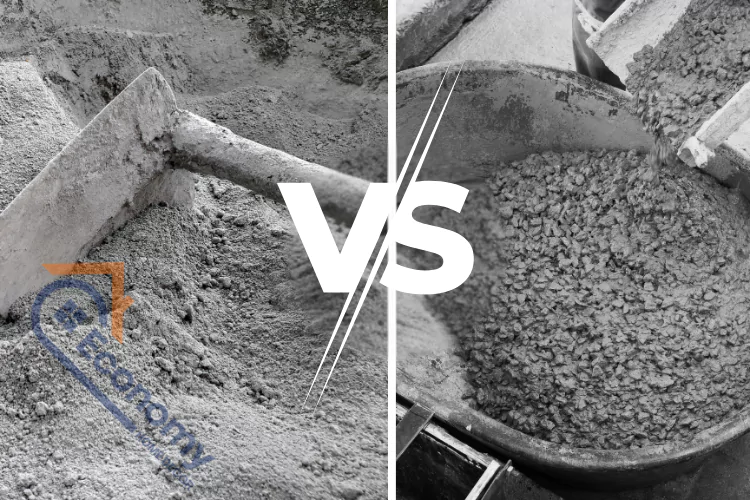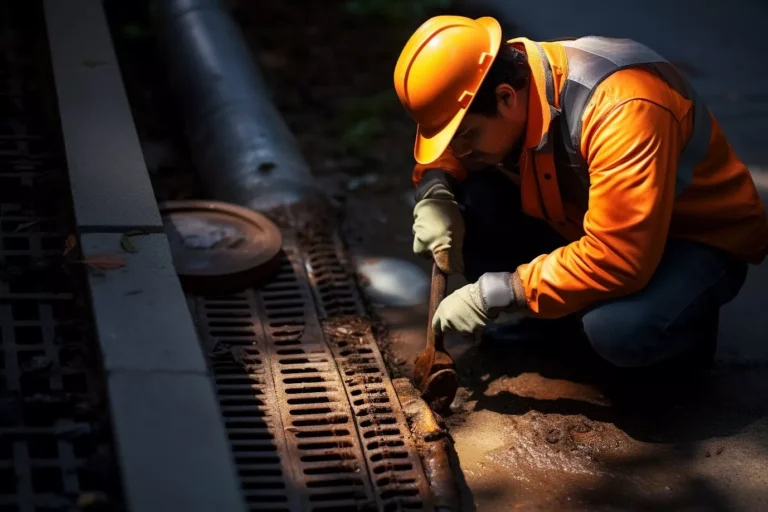When planning construction projects, many people wonder what is the difference between concrete and cement. This confusion is understandable since these materials are often used interchangeably in everyday conversation. However, understanding the distinction between these two building materials is crucial for making informed decisions about your next construction project. Whether you’re planning a driveway, patio, or foundation work, knowing what is the difference between cement and concrete can save you money and ensure better results.
Cement and concrete serve different purposes in construction, and using the wrong material can lead to costly mistakes. This comprehensive guide will walk you through everything you need to know about these essential building materials, helping you become a more informed homeowner or contractor.
Understanding the Basic Components
The fundamental answer to what is the difference between concrete and cement lies in their composition. Cement is actually just one ingredient in concrete, much like flour is just one ingredient in bread. Portland cement, the most common type used in construction, acts as the binding agent that holds everything together. It’s a fine powder made from limestone, clay, shells, and silica sand that have been heated to extremely high temperatures in a kiln.
Concrete, on the other hand, is a complete mixture that includes cement plus three other essential components: water, sand (fine aggregate), and gravel or crushed stone (coarse aggregate). When these four ingredients are combined in the proper proportions, they create a strong, durable material that can withstand tremendous weight and weather conditions. The cement acts as the glue that binds the sand and gravel together, while water activates the chemical reaction that causes the mixture to harden.
This distinction is important because you cannot simply use cement alone for most construction projects. Pure cement would crack and crumble without the structural support provided by the aggregates. Understanding this relationship helps explain why what is the difference between cement and concrete is such an important question for anyone involved in construction work.
The Role of Cement in Construction
Cement serves as the foundation of modern construction, literally and figuratively. When people ask what is the difference between cement concrete and mortar, they’re touching on cement’s versatility as a binding agent. In its pure form, cement is rarely used alone except for specific applications like grouting or filling small cracks. Instead, it’s mixed with other materials to create various construction products.
The manufacturing process of cement involves crushing raw materials like limestone and clay, then heating them to temperatures around 2,700 degrees Fahrenheit. This process creates clinker, which is then ground into the fine powder we know as cement. Different types of cement are produced for specific applications, including rapid-setting cement for quick repairs and sulfate-resistant cement for harsh environmental conditions.
Modern construction would be impossible without cement’s binding properties. It provides the chemical reaction necessary to transform loose materials into solid, durable structures. When water is added to cement, it begins a process called hydration, which continues for years and actually makes the material stronger over time. This is why understanding what is the difference between cement mortar and concrete is crucial for selecting the right material for your project’s specific needs.
Concrete: The Complete Building Material
Concrete represents the evolution of cement into a complete structural material. When contractors discuss what is the difference between concrete cement and mortar, they’re highlighting concrete’s role as a comprehensive building solution. The typical concrete mix consists of approximately 10-15% cement, 60-75% aggregate (sand and gravel), and 15-20% water, though these proportions can vary based on the intended use.
The strength of concrete comes from its composite nature. The cement paste (cement and water) fills the spaces between the aggregate particles and binds them together. As the cement hydrates, it forms a hard matrix that locks the aggregates in place. This creates a material that’s incredibly strong in compression – meaning it can support tremendous weight when properly cured.
Different concrete mixes are designed for specific applications. For example, high-strength concrete used in skyscrapers might contain additional materials like fly ash or silica fume to increase density and strength. Decorative concrete might include colorants or special aggregates for aesthetic appeal. Understanding these variations helps explain what is the difference between concrete mix and cement mix and why professional contractors carefully select their materials based on project requirements.
Key Differences in Composition and Properties
| Aspect | Cement | Concrete |
|---|---|---|
| Primary Components | Limestone, clay, shells, silica sand | Cement, water, sand, gravel/crushed stone |
| Appearance | Fine gray powder | Solid, rock-like material with visible aggregates |
| Strength | Weak when used alone | Extremely strong in compression |
| Applications | Binding agent, grouting | Foundations, driveways, sidewalks, buildings |
| Cost | Less expensive per pound | More expensive but provides complete solution |
| Durability | Prone to cracking alone | Highly durable when properly mixed and cured |
This comparison table clearly illustrates what is the difference between ready mix concrete and cement. Ready-mix concrete arrives at your job site as a complete product, while cement would need to be mixed with aggregates and water on-site to create a usable material.
Applications and Use Cases
Understanding what is the difference between ready-mix concrete and cement becomes crucial when planning construction projects. Cement alone is typically used for specialized applications like repairing small cracks, creating grout for tile work, or mixing small batches of concrete or mortar on-site. Professional contractors might use pure cement for pointing work between bricks or stones, where a thin, smooth application is needed.
Concrete applications are far more extensive and include virtually every type of construction project. Foundations, driveways, sidewalks, patios, retaining walls, and building structures all rely on concrete’s strength and durability. The versatility of concrete allows it to be poured into virtually any shape, making it ideal for both structural and decorative applications.
The choice between using cement-based products versus concrete depends entirely on your project’s scope and requirements. Small repair jobs might call for a cement-based product, while major construction projects will almost certainly require concrete. This distinction helps explain what is the main difference between concrete and cement – one is a component, while the other is a complete building system.
Cost Considerations and Budget Planning
When homeowners research what is the difference between a concrete and cement slab, cost often becomes a primary concern. Cement is less expensive per pound than concrete, but this comparison is misleading because cement cannot be used alone for most slab applications. A proper concrete slab requires not just cement, but also sand, gravel, and labor for mixing and placement.
The true cost comparison should factor in all materials and labor required for the project. Ready-mix concrete typically costs more upfront but eliminates the need to purchase and transport separate materials. For large projects, this convenience often results in overall cost savings through reduced labor and equipment rental expenses.
Professional installation costs can vary significantly based on project complexity, site conditions, and local labor rates. Simple concrete slabs might cost $3-8 per square foot installed, while decorative or structural concrete can cost $10-20 per square foot or more. Understanding these cost factors helps homeowners make informed decisions about their construction projects and avoid budget surprises.
Mixing and Preparation Differences
The process differences between working with cement versus concrete help illustrate what is the difference between concrete and cement block applications. Cement mixing requires careful attention to proportions and typically involves smaller batches for specific applications. The consistency should be smooth and free of lumps, similar to thick paint or paste.
Concrete mixing, whether done on-site or delivered as ready-mix, involves much larger volumes and requires proper equipment for handling. The mixing process must ensure uniform distribution of all components while maintaining the correct water-to-cement ratio. Too much water weakens the final product, while too little water prevents proper hydration and workability.
Proper mixing techniques are crucial for achieving desired strength and durability. Professional contractors use specialized equipment and have experience with different mix designs to ensure optimal results. This expertise becomes particularly important for structural applications where material failure could have serious consequences. DIY enthusiasts should understand these complexities before attempting large concrete projects independently.
Strength and Durability Characteristics
The structural properties of these materials fundamentally explain what is the difference between cement and concrete and mortar. Pure cement, when hardened, has limited structural value and is prone to shrinkage cracking. It lacks the internal framework provided by aggregates, making it suitable only for thin applications or as a component in other mixes.
Concrete’s strength comes from its composite structure, where the aggregate particles provide the framework and the cement paste provides the binding. Properly mixed and cured concrete can achieve compressive strengths exceeding 4,000 pounds per square inch (psi), with some high-performance mixes reaching 10,000 psi or higher. This strength develops gradually, with most concrete reaching about 70% of its ultimate strength within seven days and continuing to gain strength for months or even years.
Environmental factors significantly impact the durability of both materials. Concrete generally performs better in harsh conditions due to its lower permeability and better resistance to freeze-thaw cycles. The aggregate in concrete also provides dimensional stability, reducing the shrinkage and cracking that can occur with cement-based materials. Understanding these performance characteristics helps explain why concrete is preferred for most structural applications.
Common Misconceptions and Clarifications
Many people incorrectly use the terms cement and concrete interchangeably, leading to confusion about what is the difference between cement and concrete mix products available at home improvement stores. “Cement mix” typically refers to products that contain cement along with sand and sometimes small aggregates, designed for specific applications like setting posts or making small repairs.
Another common misconception is that cement is stronger than concrete. In reality, pure cement is much weaker and more brittle than properly mixed concrete. The aggregate in concrete provides the structural backbone that gives the material its impressive strength characteristics. This misunderstanding can lead to poor material choices and project failures.
Professional contractors understand these distinctions and select materials based on specific project requirements rather than general assumptions. Homeowners benefit from understanding these differences to communicate effectively with contractors and make informed decisions about their construction projects. This knowledge also helps prevent costly mistakes that can occur when the wrong material is used for a particular application.
Environmental Impact and Sustainability
The environmental considerations surrounding cement and concrete production have become increasingly important in modern construction. Cement manufacturing is responsible for approximately 8% of global carbon dioxide emissions, primarily due to the high-temperature kilns required for production and the chemical process that releases CO2 from limestone.
Concrete’s environmental impact extends beyond just the cement component. The extraction of sand and gravel for aggregates can impact local ecosystems, while the transportation of these heavy materials contributes to fuel consumption and emissions. However, concrete’s long lifespan and durability can offset some of these initial environmental costs through reduced need for replacement and maintenance.
Sustainable concrete practices are evolving to address these environmental concerns. These include using recycled aggregates, incorporating industrial byproducts like fly ash or slag as partial cement replacements, and developing new cement formulations that produce fewer emissions. Understanding these environmental factors helps explain why what is the difference between a concrete slab and cement applications might influence long-term sustainability goals for construction projects.
Professional Installation vs. DIY Considerations
Deciding between professional installation and DIY approaches requires understanding what is the difference between concrete and cement block projects and their complexity levels. Cement-based projects like small repairs or pointing work are often suitable for DIY enthusiasts with basic skills and proper safety equipment.
Concrete projects, particularly structural applications like foundations or large slabs, typically require professional expertise. The complexity of achieving proper mix designs, adequate reinforcement, and proper curing techniques makes professional installation worth the investment for most major projects. Professionals also have access to specialized equipment and can coordinate concrete delivery timing with placement and finishing work.
The consequences of improper installation can be severe, including structural failure, premature deterioration, or costly repairs. Professional contractors carry insurance and warranties that protect homeowners from these risks. They also understand local building codes and permit requirements that may apply to concrete work. These factors often make professional installation the most cost-effective choice for significant concrete projects, despite higher upfront costs.
Maintenance and Longevity Factors
Long-term maintenance requirements differ significantly between cement and concrete applications. Pure cement applications typically require more frequent maintenance due to their tendency to crack and deteriorate more quickly than concrete. However, these applications are usually small-scale and relatively easy to repair or replace.
Concrete structures, when properly installed and maintained, can last for decades with minimal intervention. Regular maintenance includes sealing to prevent water penetration, prompt repair of any cracks that develop, and protection from harsh chemicals like de-icing salts. The initial investment in quality concrete work pays dividends through reduced maintenance costs over the structure’s lifespan.
Preventive maintenance is key to maximizing the lifespan of both cement and concrete installations. This includes proper drainage to prevent water damage, regular inspection for signs of deterioration, and prompt repair of minor issues before they become major problems. Understanding these maintenance requirements helps homeowners budget for long-term ownership costs and plan appropriate maintenance schedules.
Key Takeaways
Understanding the distinction between cement and concrete is essential for anyone involved in construction projects. Here are the most important points to remember:
- Cement is an ingredient, concrete is the finished product – Cement serves as the binding agent in concrete, similar to how flour functions in bread
- Composition differences matter – Concrete includes cement plus water, sand, and gravel, while cement is a standalone powder
- Applications vary significantly – Cement is used for small repairs and grouting, while concrete handles major structural work
- Strength characteristics differ dramatically – Concrete is much stronger and more durable than cement used alone
- Cost considerations extend beyond material prices – Ready-mix concrete often provides better value despite higher upfront costs
- Professional installation is recommended for major concrete projects – The complexity and consequences of improper installation justify professional expertise
- Environmental impact considerations are increasingly important – Both materials have environmental costs, but concrete’s longevity can offset initial impacts
- Maintenance requirements vary – Concrete structures typically require less frequent maintenance than cement-only applications
Frequently Asked Questions
Can I use cement instead of concrete for my driveway?
No, cement alone is not suitable for driveway construction. You need concrete, which contains cement plus aggregates for strength and durability. Using only cement would result in cracking and failure.
What is the difference between ready-mix concrete and mixing my own?
Ready-mix concrete is professionally mixed to exact specifications and delivered to your site, ensuring consistency and quality. Mixing your own concrete can be more economical for small projects but requires proper equipment and expertise to achieve consistent results.
How long does concrete take to cure compared to cement?
Both cement and concrete follow similar curing timelines, typically reaching working strength in 7 days and full strength in 28 days. However, concrete’s curing process is more complex due to the interaction between cement paste and aggregates.
Is concrete or cement better for small repairs?
For very small repairs and cracks, cement-based products or hydraulic cement might be appropriate. For larger repairs or anything structural, concrete or concrete patching compounds are usually better choices.
Q: What is the difference between cement concrete and mortar?
Concrete contains large aggregates (gravel), making it suitable for structural applications. Mortar contains only sand as aggregate, making it appropriate for bonding bricks, blocks, and stones. Cement is the binding agent in both.
Conclusion
Understanding what is the difference between concrete and cement empowers you to make informed decisions about construction projects and communicate effectively with contractors. While cement serves as the crucial binding agent, concrete provides the complete structural solution for most building applications. The key lies in recognizing that cement is a component of concrete, not a substitute for it.
Whether you’re planning a small repair project or a major construction undertaking, this knowledge helps ensure you select the appropriate materials and understand the scope of work involved. Professional consultation remains valuable for complex projects, but understanding these fundamental differences gives you the confidence to participate meaningfully in planning and decision-making processes.
Remember that both materials have their place in construction, and the choice between them depends on your specific application, budget, and performance requirements. With this comprehensive understanding, you’re well-equipped to tackle your next construction project with confidence and achieve the durable, long-lasting results you desire.







